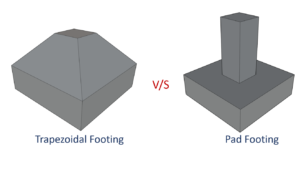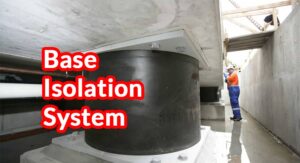
What Is Soil Stabilization?
The biological, chemical or mechanical adjustment of engineering properties of soil is known as soil stabilization. Soil stabilization is a technique used in civil engineering to modify and improve the engineering properties of soils. Shear strength, permeability, compressibility, durability, and plasticity are examples of these properties.
Physical or mechanical improvement is widespread, although certain schools prefer to use the term “stabilization” to refer to chemical improvements in soil qualities achieved through the use of chemical admixtures.

Soil serves as the basis for any construction project, whether it be a structure, a road, or an airfield. Furthermore, soil is an important construction material.
Objectives Of Soil Stabilization
There are different objectives for this, which include:
- Substituting poor-quality soils with aggregates with better engineering properties.
- Strengthening of the soil, and its bearing capacity.
- Waterproofing is used to preserve natural or man-made buildings.
- To encourage the use of waste geomaterials in building construction.
- To improve permeability characteristics.
- To enhance unfavorable soil properties such as excessive swelling or shrinkage, high plasticity, and so on.
- To make use of inferior quality local materials.
Materials Used In Soil Stabilization
The materials used in soil stabilization vary depending on the approach used. They are as follows:
- The soil of different gradations,
- Cement, Lime & Fly ash,
- Aggregates of various grades,
- Synthetic and natural polymers,
- Geomaterials include geogrids and geo blankets,
- Solid municipal, mining, & industrial waste products.
Methods Of Soil Stabilization
Different soil stabilization methods are discussed below:
1. Mechanical Stabilization
Physical procedures such as compacting or tamping with machinery like rollers or rammers fall within this category. To carry out this procedure, heavy machinery capable of applying a large compressive force is needed. This usually includes a huge compactor or, in rare cases, a crane with dropping weight.

When mechanical soil stabilization is used, the soils that are stabilized are frequently rocky and sandy soils. Mechanical stabilization is rarely the sole stabilization method due to advances in other types of soil stabilization.
While mechanical soil stabilization is not widely used, it has advantages. One advantage is that the soil particles are physically transformed, implying that no chemical changes are taking place that will eventually wear away. The method is known to be time-consuming, difficult, and expensive due to the physical modification.
Advantages
- Permanent.
- Environmentally Friendly.
Disadvantages
- Labor intensive.
- Expensive.
- No longer a popular method.
2. Chemical Stabilization
As the name implies, it is dependent on the chemical reaction that occurs between the chemical/stabilizer used and the soil particles. Cement, lime, magnesium chloride, bitumen emulsion, and fly ash are a few examples that are used.
i) Lime & Cement Soil Stabilization
One of the most common methods of soil stabilization is lime or cement soil stabilization. This method of soil stabilization involves mixing lime or cement into the soil to boost its strength and resistance.
Although soil stabilization with cement or lime is a common method, it is most typically used on paved roadways. Typically, treating unpaved roads with cement is cost-prohibitive.

The usage of lime or cement to stabilize soil is frequently determined by geographical area. Some areas have easy access to lime, whereas others do not, making cement more cost-effective.
Soil stabilization with lime or cement works by binding all of the soil’s particles together, improving the strength of the soil. Because this approach necessitates the addition of cement or lime to the soil, practically all soil types are compatible with this method of soil stabilization.
Soil testing is essential to ensure that the appropriate amount of additives is applied. If only a small amount of additive is employed, the soil will not achieve the appropriate strength. If a greater amount is used, the soil may shrink or crack.
Advantages
- Long-lasting and permanent.
- Tested and proven.
- Most soil types are compatible with it.
- The soil is extremely dense.
- Reduces soil moisture content.
Disadvantages
- Expensive.
- Potential health risks.
- Only applicable to cemented roads.
- Before application, comprehensive soil testing is required.
ii) Fly Ash Soil Stabilization
Fly ash soil stabilization is similar to lime or cement soil stabilization, however, the product employed differs. Fly ash is a byproduct of coal that is used in coal-fired power plants.
Traditionally, fly ash is stored in landfills or ponds, but it can also be used as a bonding agent to strengthen the soil. Fly ash is typically used to treat the subbase of paved roads, similar to how cement and lime stabilization are used for soil stabilization as the subbase to paved roads.Because fly ash is a dry additive, one significant advantage is utilizing it in the soil above optimum moisture levels on a regular basis. The powder will absorb moisture and reduce the moisture content of the soil.

When compared to lime or cement soil stabilization, fly ash typically reduces soil stabilizing costs. Fly ash is essentially a byproduct of different manufacturing processes.
Fly ash has a significant advantage in that it is a dry additive, which is highly advantageous for high moisture soils. Being a dry additive has the disadvantage of being hard to apply, as well as posing a health risk to workers due to the powder’s inhalation risk.
Another consideration when utilizing fly ash is the curing time. While the cure period varies depending on the fly ash and soil, it is frequently longer than that of cement or lime-treated soil.
Advantages
- Permanent, long-lasting.
- Compatible with most soil types.
- Various types for different uses.
- More cost-effective than cement or lime.
- Usable with high moisture soils.
Disadvantages
- Health concerns.
- Labor intensive.
- Availability based on coal-fired power plants.
3. Polymer Stabilization
Polymer soil stabilization is the adding of polymers to soils to improve their physical and engineering properties. Polymers, through their interaction with clayey particles in the soil, tend to increase the strength of the soil.
Many of the polymers currently in use tend to boost the soil’s water retention capacity and shear strength. Polymers used for soil stabilization are divided into two types: Biopolymers and synthetic polymers. Biopolymers are more environmentally benign than other chemical soil stabilizers.

Polymers work based on a long repeating molecule, which means that soil particles bond to the molecule. Polymers are so compatible with all types of soil, ranging from sandy to clay. Because the soil particle must fit into the molecule, the size of a polymer’s molecule affects its performance on any specific soil.
The molecule size of the polymer is especially significant since a molecule that is too large may not allow a little clay particle to fit correctly, or vice versa with a small molecule and a large sand particle.
While polymers are versatile soil stabilizers, not all of them are suitable for fine soils. Polymer’s lifespan and properties might differ based on the polymer. Traditional treatments, on the other hand, endure 1 to 3 years with minimum maintenance.
Most polymer applications create an impermeable surface that is impervious for the duration of the application. However, just as the lifespan varies, so may the performance of water.
Advantages
- Compatible with all soils.
- Easy to apply.
- Impermeable.
Disadvantages
- Not always environmentally friendly.
- Short lifespan.
- Requires a lot of products per application.
- Can be messy.
4. Stabilization Using Geotextiles
Geotextiles are materials that are applied to soil to improve soil stability, reduce erosion, and aid in drainage. Geotextiles are available in a variety of sizes and thicknesses.
Some are woven, while others are thick plastic extrusions up to four inches thick. Geotextiles are mostly used to prevent erosion. They protect the top layer of soil from being moved by rain or water in this example.
Geotextiles can be used for road construction in particular places and purposes. Thicker extrusion geotextiles are frequently required for road building to give the necessary strength.
Geotextiles are available in a range of forms and sizes and can be applied to practically any soil type. Geotextiles are extensively used for erosion control.
Due to their high cost, they are rarely used for road building or big, heavy load applications. Geotextiles are typically labor-intensive due to their mechanical nature, as laborers must manually lay them out.

Advantages
- Permanent, long-lasting
- Compatible with most soil types
- Various types for different uses
Disadvantages
- Expensive
- Time-consuming
- Labor intensive




